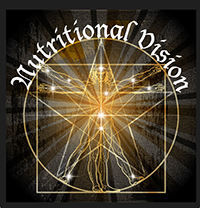Cranberry flavonols and PACs possess cytotoxic properties against ovarian cancer cells.
GreenMedInfo Summary
Click here to read the complete article.
Abstract Title:
The cranberry flavonoids PAC DP-9 and quercetin aglycone induce cytotoxicity and cell cycle arrest and increase cisplatin sensitivity in ovarian cancer cells.
Abstract Source:
Int J Oncol. 2015 May ;46(5):1924-34. Epub 2015 Mar 17. PMID: 25776829
Abstract Author(s):
Yifei Wang, Alex Han, Eva Chen, Rakesh K Singh, Clinton O Chichester, Richard G Moore, Ajay P Singh, Nicholi Vorsa
Article Affiliation:
Yifei Wang
Abstract:
Cranberry flavonoids (flavonols and flavan-3-ols), in addition to their antioxidant properties, have been shown to possess potential in vitro activity against several cancers. However, the difficulty of isolating cranberry compounds has largely limited anticancer research to crude fractions without well-defined compound composition. In this study, individual cranberry flavonoids were isolated to the highest purity achieved so far using gravity and high performance column chromatography and LC-MS characterization. MTS assay indicated differential cell viability reduction of SKOV-3 and OVCAR-8 ovarian cancer cells treated with individual cranberry flavonoids. Treatment with quercetin aglycone and PAC DP-9, which exhibited the strongest activity, induced apoptosis, led to caspase-3 activation and PARP deactivation, and increased sensitivity to cisplatin. Furthermore, immunofluorescence microscopy and western blot study revealed reduced expression and activation of epidermal growth factor receptor (EGFR) in PAC DP-9 treated SKOV-3 cells. In addition, quercetin aglycone and PAC DP-9 deactivated MAPK-ERK pathway, induced downregulation of cyclin D1, DNA-PK, phospho-histone H3 and upregulation of p21, and arrested cell cycle progression. Overall, this study demonstrates promising in vitro cytotoxic and anti-proliferative properties of two newly characterized cranberry flavonoids, quercetin aglycone and PAC DP-9, against ovarian cancer cells.
Academic Cite:
Yifei Wang, Alex Han, Eva Chen, Rakesh K Singh, Clinton O Chichester, Richard G Moore, Ajay P Singh, Nicholi Vorsa. The cranberry flavonoids PAC DP-9 and quercetin aglycone induce cytotoxicity and cell cycle arrest and increase cisplatin sensitivity in ovarian cancer cells. Int J Oncol. 2015 May ;46(5):1924-34. Epub 2015 Mar 17.
Pubmed-Cite:
Yifei Wang, Alex Han, Eva Chen, Rakesh K Singh, Clinton O Chichester, Richard G Moore, Ajay P Singh, Nicholi Vorsa. The cranberry flavonoids PAC DP-9 and quercetin aglycone induce cytotoxicity and cell cycle arrest and increase cisplatin sensitivity in ovarian cancer cells. Int J Oncol. 2015 May ;46(5):1924-34. Epub 2015 Mar 17. PMID: 25776829
GMI-Cite:
Yifei Wang, Alex Han, Eva Chen, Rakesh K Singh, Clinton O Chichester, Richard G Moore, Ajay P Singh, Nicholi Vorsa. The cranberry flavonoids PAC DP-9 and quercetin aglycone induce cytotoxicity and cell cycle arrest and increase cisplatin sensitivity in ovarian cancer cells. Int J Oncol. 2015 May ;46(5):1924-34. Epub 2015 Mar 17. PMID: 25776829
Article Published Date : Apr 30, 2015
Study Type : In Vitro Study
Additional Links
Substances : Cranberry : CK(349) : AC(69), Flavan-3-ols : CK(55) : AC(6)
Diseases : Ovarian Cancer : CK(363) : AC(129)
Pharmacological Actions : Antiproliferative : CK(2546) : AC(1685), Apoptotic : CK(2958) : AC(2075), Cell cycle arrest : CK(810) : AC(612), Chemosensitizer : CK(394) : AC(286), Cytotoxic : CK(76) : AC(60), Epidermal growth factor receptor (EGFR) inhibitor : CK(65) : AC(41), P21 Activation : CK(72) : AC(47)
Additional Keywords : Chemotherapeutic Synergy: Cisplatin : CK(137) : AC(103)

No Comments Yet